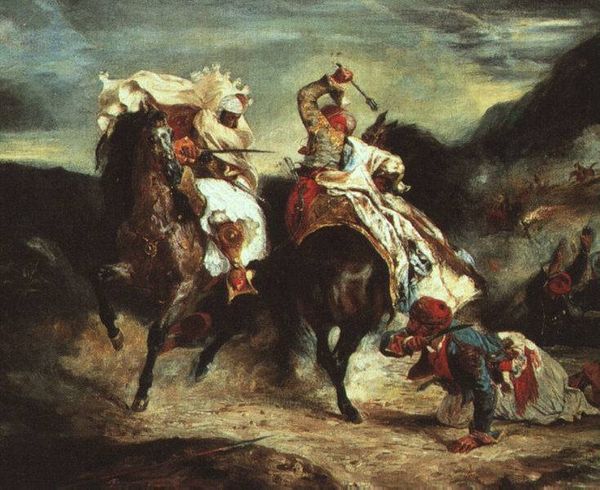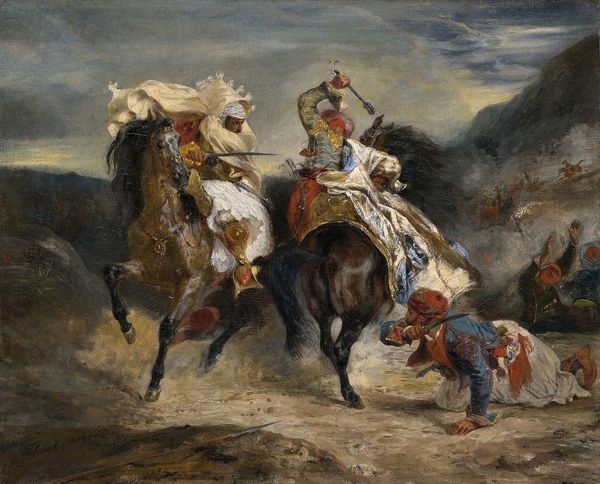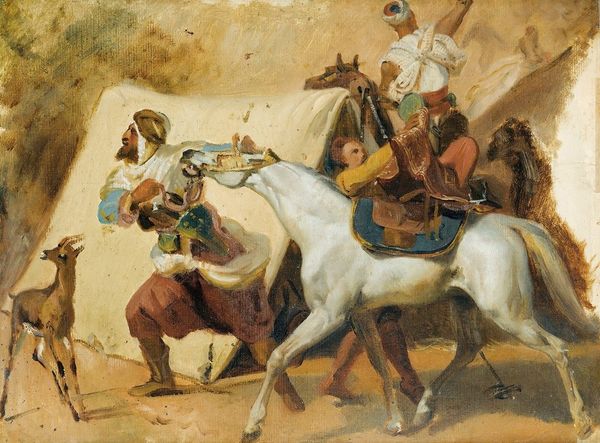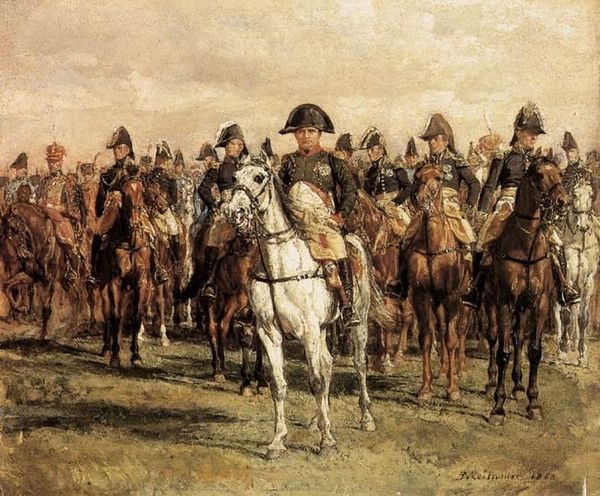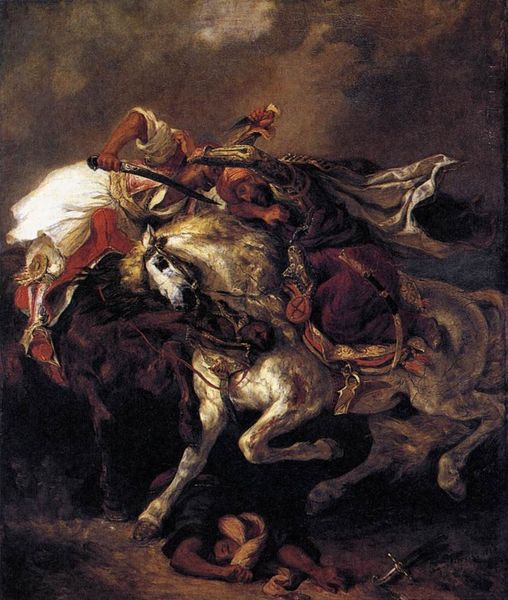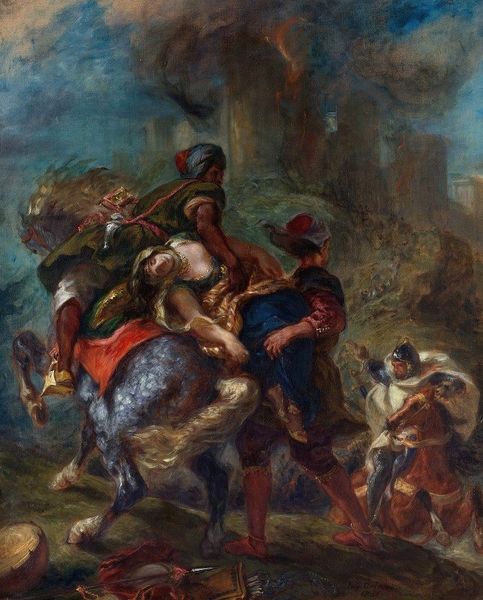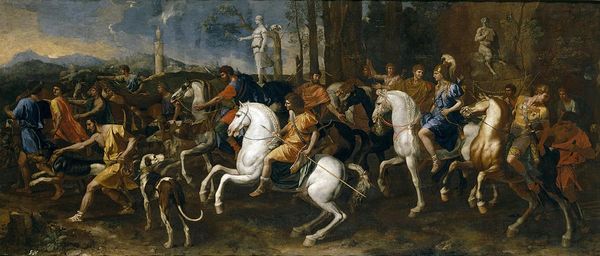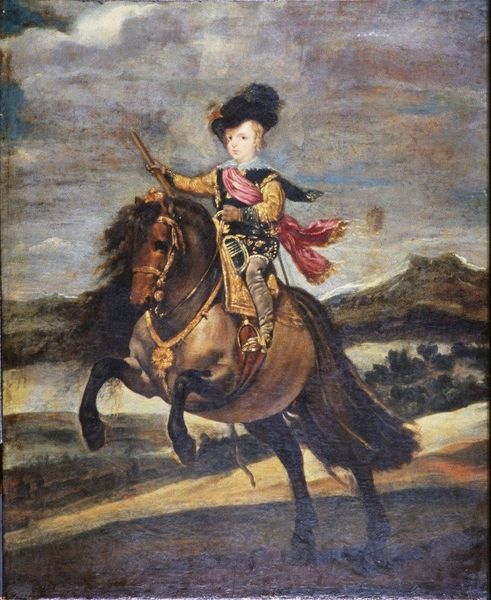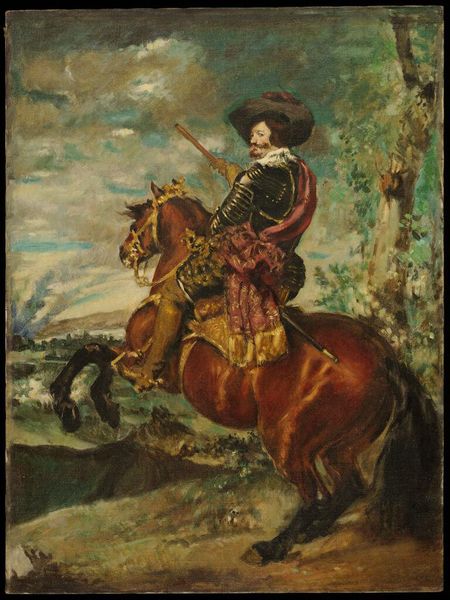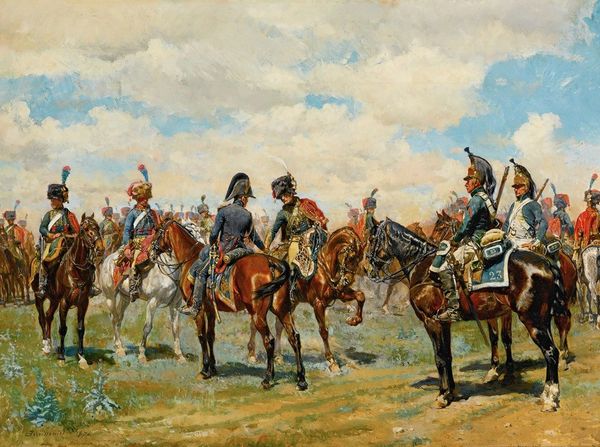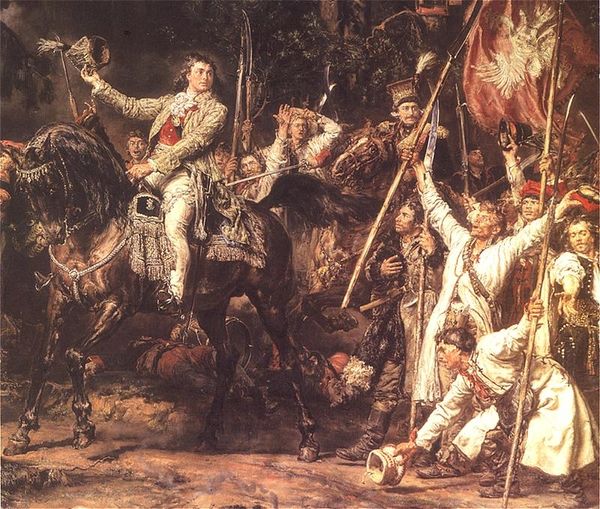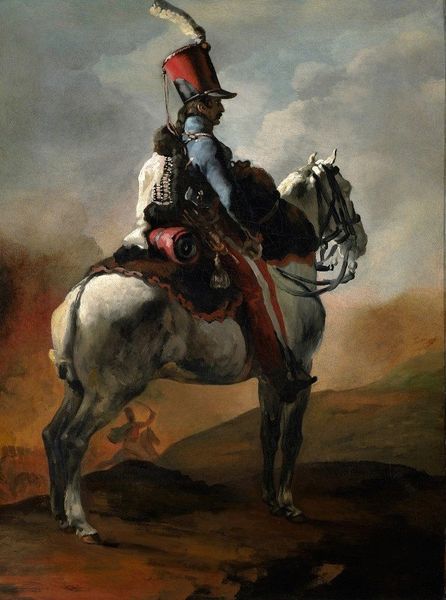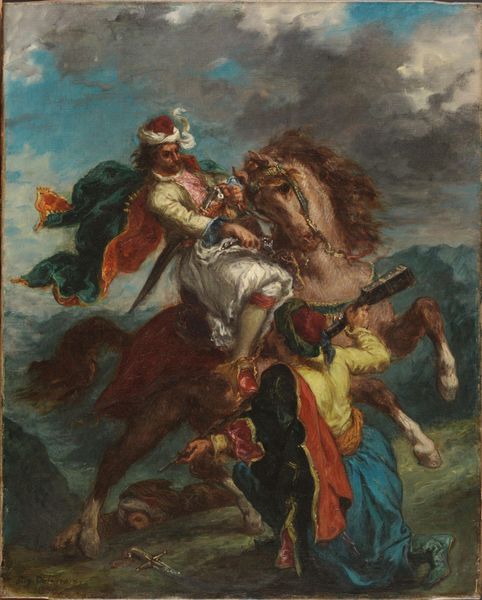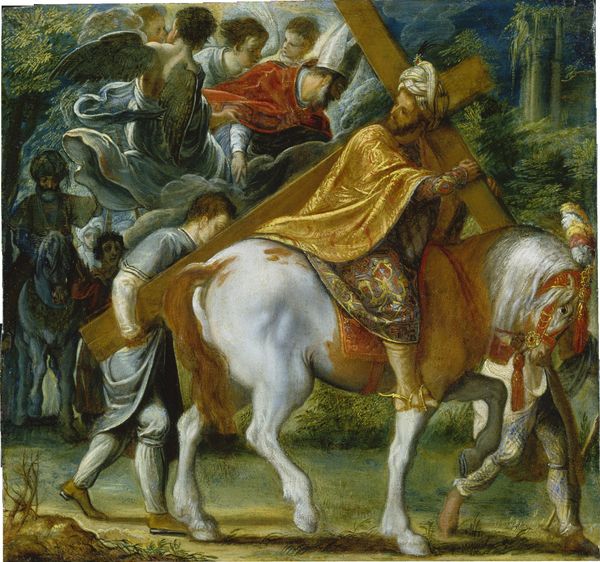
Copyright: Public Domain: Artvee
Hans Makart painted "Three Mounted Standard Bearers" in Austria, during the late 19th century. The painting depicts three men on horseback, each carrying a flag or standard. The image is rich in visual codes and historical associations. The flags suggest a military or ceremonial context, evoking notions of power, authority, and national identity. The opulence of the figures' attire, combined with the artist’s loose brushwork, speaks to the aesthetic preferences of the time. Austria, during Makart's lifetime, was part of the Austro-Hungarian Empire, a complex multi-ethnic state, in which art played a role in constructing and reinforcing imperial identity. Paintings like this one reflect the social structures of their time, often celebrating the ruling elite and the military. But to fully understand the painting’s meaning, we need to delve deeper, examining the cultural references and historical context. Researching the specific flags, the attire, and the history of the Austro-Hungarian Empire can help us better understand the painting. Art is contingent on its social and institutional context.
Comments
No comments
Be the first to comment and join the conversation on the ultimate creative platform.
